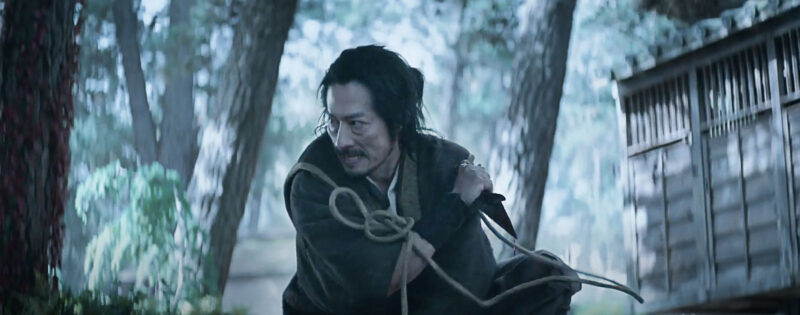
It is the summer of 1984, and I am baffled.
Hiroyuki ‘Henry’ Sanada has been with me through every phase of my ninja fandom. Desperately hungry for ANYTHING ninja in the mid-80s and as pasted to HBO as any other teen was, the surreal Ninja Wars (Iga Ninpocho) pushed the envelope of what I then considered shinobi cinema. It had heroes and villains claiming to be ninja but never donning black suits or hoods (clutch my pearls!), multiple practitioners of all sorts of goofy magic, laser-karate chops, and nary a ninja star was thrown. Unconvinced as I was the film deserved its ‘ninja’ moniker, Ninja Wars stuck to me like BBQ sauce on ribs.
The convoluted tale, based on a novel by prolific ninja author Futaro Yamada, sees evil sorcerer Kashin Koji manipulating real-life historical warlord Danjo Matsunaga with magic teapots, aphrodisiacs and decapitated women whose heads have been reattached to each others’ bodies. Then there’s the ninja hero Jotaro who can take down trees with laser chops and five devil monks each with a specialty power more bizarre than the next. Oh, plus Sonny Chiba pimped-out in black finery right off the set of Kage no Gundan. Historical events such as the warrior monk uprising and burning of the Todai-Ji temple and Buddha statue in 1567 flow into trips to stormy other-realms and Japanese Hell where pop-star heroines get burned on the cross and yeah I’ve seen this movie dozens of times over the past thirty years and I still have no clue what’s going on…
But Sanada was a hero’s hero, doing his own insane flying stunts over the heads of nekkid sorceress ladies, giant pro-wrestlers and spewers of anti-ninja acid barf.
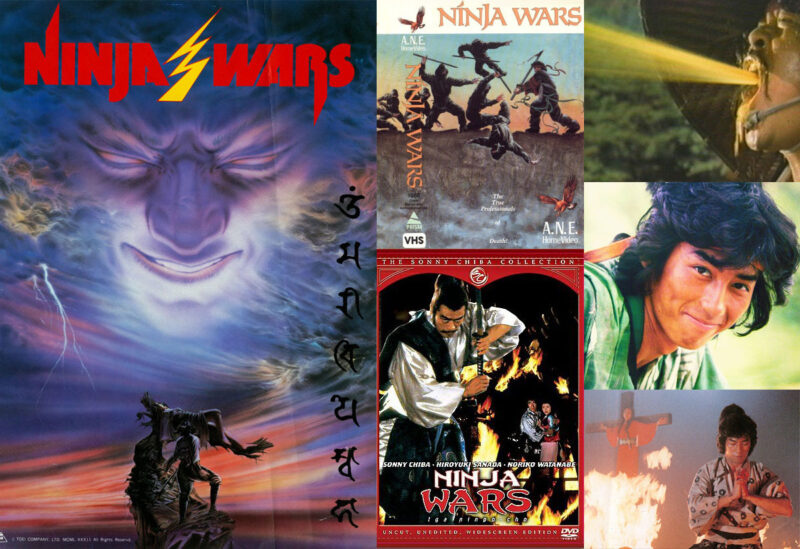
My local video store had Legend of the Eight Samurai and Shogun’s Ninja as well, so the Kadokawa special effects-driven and Japan Action Club-fueled stunt spectacles became a staple for me, and planted Sanada right next to Kosugi and Dudikoff.
It is the fall of 1993, and I am impressed.
As the craze waned and ninja became synonymous with turtles and precocious kids, I’m (now ashamed) to admit I let the ninja fandom hibernate as I left school and relocated to my first real job — aka life getting in the way. Until a trip to a comic book store on a Wednesday night and curiosity as to why there was a cluster of people around one of the arcade machines in the back introduced me to popular entertainment’s next iteration and evolution of ninja — Mortal Kombat.
The bright primary colors of Sub Zero and Scorpion were a little off-putting for this black-pajama traditionalist — were they emulating the look of the Hong Kong Godfrey Ho films with their garish mail-order gold and pink ninja suits, or just embracing the colorfulness of the 90s comic book and superhero boom?

OK, so they weren’t MY ninja, but ninja they were, AND… I recognized right away the basic, foundational value of the shinobi as a character idiom being reclaimed to the realm of exploitive ultra-violence. This was the most blood spilled by a ninja since Pray for Death! I may not have been fully on board with MK (or derivative ninja-infused properties like WMAC Masters), but these things were keeping ninja afloat — not letting them languish in the wastelands of turtles and cub-scouts — and for that I was grateful.
It is winter 2005, and I have finally made a connection.
In the ascension of the period I now like to call the “Nin-stalgia Boom” — wherein DVD labels went apeshit on deluxe releases of a boatload of old ninja movies, I’d end up making a crucial connection. Armed with prints of of films like my long-beloved Ninja Wars, now UN-CUT and way more coherent in the original language, plus a massive influx of fan-subbed DVD-Rs traded across continents, I was awash in media from every era of shinobi cinema. In finally experiencing the full panorama of the genre, I saw a parallel (intentional or not) between the magic-like superpowers of Mortal Kombat‘s ninja characters and the oldest of shinobi media traditions — the black magic wizards. Long pre-dating the hooded martial commando thing, the ninjutsu practitioner — a young hero having learned exotic shape-changing abilities and weather-altering skills from some mountain hermit — would typically battle an older evil villain who had perverted the same skills to his own foul means.
This ninja wizardry, dating back to oral traditions and folklore and consistently adapted into the earliest pulp literature, then kabuki theater, silent film (see a rare example here) and technicolor cinema (like this gem), even 1970s kid’s TV (such as…), had a lot more in common with the 90s superpower video game ninja than the 60s and 80s martial artists of the screen ever did. So in 1993, when I’m first seeing Mortal Kombat‘s magical superpowers, I’m seeing the snake (er, dragon in this case?) biting its own tail, even if I and 99.99% of the world’s population wasn’t aware…
The ninja wizardry of old (WAY old) would also flourish under the brush of digital cinema, with X-Men-inspired films like Shinobi: Heart Under Blade (plus new versions of Red Shadow and Azumi to a degree) brazenly embracing magical superpowers instead of black suits and shadowy espionage.
It is Thursday, Feb 18, 2021, and I am smiling.
So now it’s a Thursday morning, and I’m watching a new Mortal Kombat tailer on YouTube — a movie reboot intended for theaters but relegated to streaming by the nigh-apocalypse (or at least the nigh-apocalypse of the theater industry). It may be a different world out here, but within the confines of Mortal Kombat‘s fictional sphere not much has changed — super-powered and/or magic-wielding ninja (looking more traditional Japanese than ever, too) are slaughtering poor fools! MK‘s history on the big and small screen, and decades of start/stop movie and TV reboots not keeping up with the continually evolving video game, has challenged its fanbase to see the least. However, from my POV at least, it seems all roads have finally led home and we’ve got a great-looking dead-serious MK movie on the horizon.
And it would also seem my beloved Sanada–san is right in the mix, wielding traditional ninja weapons, throwing around some super-magic, giving me flashbacks to Ninja Wars and Eight Samurai, and DAMN I AM HERE FOR IT!!!
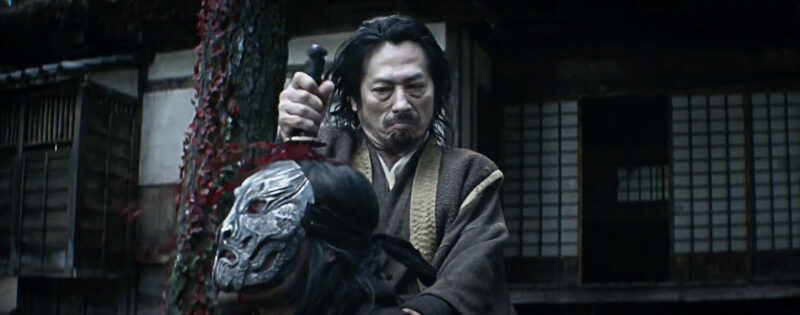
It is the 2020’s… and the 1620s are back?
One more point I want to touch on — last but certainly not least — and it’s yet another reptile nibbling it’s own hinder…
BAMBOO PUNK IS IN, BABY!
Now, the term ‘Bamboo Punk’ may be alien to most, but I’ve used it ever since the Nin-stalgia Boom of last decade. Akin to it’s source — Cyberpunk — Bamboo Punk is where Sengoku meets sci-fi, traditional meets cross-cultural and the future clings to an aesthetic of the past while blasting off to the stars. It’s also where the most modern and future-facing innovative media still lean on the classics for creativity.
Think the works of Buichi Terasawa and the pioneering Cyber Ninja where robotics and lasers fused with warring states fashion and weaponry. Even when endowed with futuristic powers or cybernetic body parts the characters still sport traditional kimono or bamboo armor as a costume base, one foot in two different far-flung eras.
Bamboo Punk is also imbued by the neo-shabby-chic couture of films like Azumi and the short Kage, where costuming had lots of extra torn up layers of fabric, scraps of animal fur and frayed rattan to make it all more textured and organic — all the while making it’s pop-star models feel contemporary and fan-friendly. This hybrid look, timeless fantasy wear, is everywhere from movies and TV to video games to theme park performers.
It also reflects trends in film and game protagonists not being golden-armored elite heroes or using their magics to generate garish kabuki-like multi-colored wardrobes for final battles. Instead they are underdogs fighting upward, wearing whatever they can stitch together. Or Yojimbo-like wandering warriors concerned way more about the sharpness of their sword than their appearance. You’re not watching or playing as a card-carrying super-being with an endless budget for armor and gadgets. The hero’s gear has seen better days, has been patched up and improvised from other cultural influences and their hair is a damn mess. And that makes them… shit, especially after this past year… US.
So in 2021, what does this more centering on us, the audience, with our diversity of ages, aesthetics and up-bringings, gobbling-up at media properties that are just as hybrid in their time period influences and executions, actually mean?
Since it’s inception, Mortal Kombat has pitted traditionally-garbed warriors against cyborgs and androids in a realm populated with mythical dragons and stadium scoreboards side-by-side. Now it looks like they’ve taken things to a new level of hybridizing. And they’re not alone…
If major corporate investments like the visually phenomenal Ghost of Tsushima and this new Mortal Kombat movie are setting themselves apart by incorporating the exoticness of traditional samurai armor with unbridled fantasy aesthetics AND the shabby-chic of Yojimbo or Three Outlaw Samurai, then that’s a trend I more than welcome others to jump all over for this next decade of ninja media!
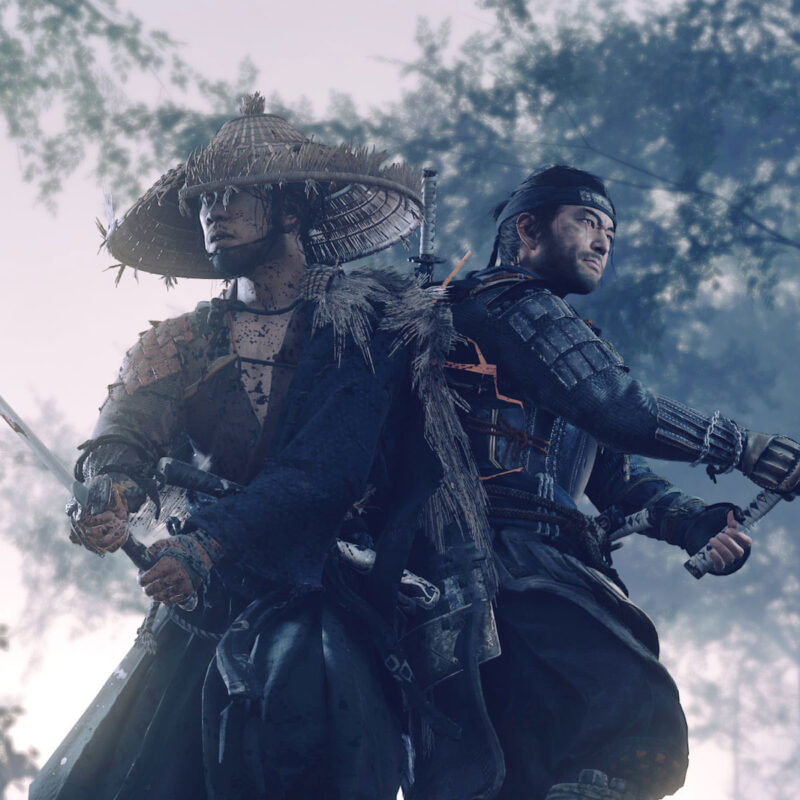
AND… the fact that you can play Ghost in black & white “Kurosawa Mode” shows even more recognition and respect of the past by modern creatives. And this is what leads to the best of both worlds meeting in a whole new entity.
The tempering of the black and yellow Godfrey Ho-looking superhero Halloween costume ninja that was the first iteration of Scorpion into this masterpiece below is testament to that…
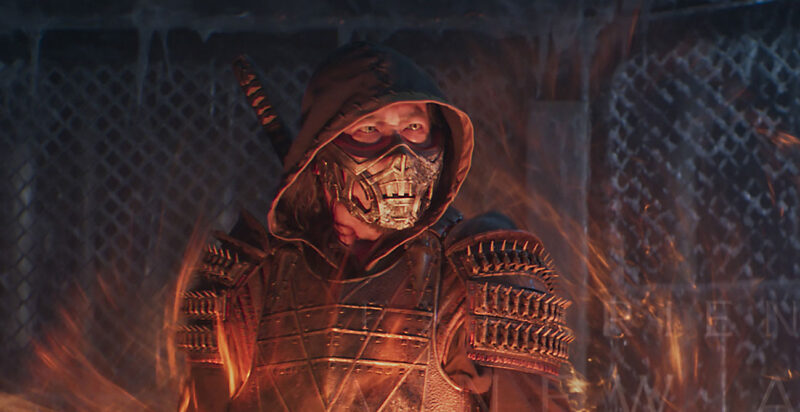
Looking forward to April 16th, when once again Hiroyuki ‘Henry’ Sanada, in this amazing new get-up, takes me on another ninja adventure, like he’s been doing since 1984.
Keith J. Rainville — February, 2021
